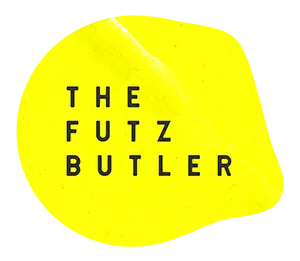Sound is no longer the poor relation to visuals.
Sound can boost sales, change behaviour or alter our physiological state. It has proved effective at reframing negative experiences as positive ones and can even reduce crime. It influences what we buy, improves our well-being and spikes our productivity.
Brands that use consistent audio branding create a 46% stronger emotional connection with their audience and 72% of consumers who recognise a brand simply by its audio logo are more likely to choose that brand over competitors.
This presents a significant opportunity for those brands that curate the audio associated with their brand effectively.
Sound, is a sound investment
In the last three years alone, there’s been a 21% rise in companies investing in a dedicated audio strategy, as an increasing number of consumer touchpoints become ‘sound-centric’.
More and more brands are awakening to the untapped potential of what audio branding can do to differentiate their positioning, create meaningful engagement and cement loyal consumers.
Let’s explore why you need an audio brand…
Table of Contents
- Why do I need an audio brand?
- Is audio branding really important?
- What are the benefits of audio branding?
1. AUDIO IS THE FUTURE
As technology and environments grow quieter and more efficient, we move away from the sonic by-product of clunky mechanics and towards a world brimming with unending possibility. Unlike ever before, we have the opportunity to truly own and sculpt what we want our world to sound like.

From generative environmental sound in parks and Smart City spaces linked to weather conditions, events or time of the day, to the sound of an electric toothbrush that no longer noticeably buzzes. The soundscape of a virtual retail store or a driverless car with a silent electric engine. What could they sound like?
For the first time, we get to decide.
We can shape our own sonic identity in a way that is a true reflection of the people that use a product or live in a particular place.

What’s clear is that the importance of what we hear is gathering momentum.
In fact, music and sound are being consumed across more touchpoints than ever before. Touchpoints that are by default audio-enabled and feel native to younger demographic markets.
AI and smart speakers reflect a wider trend in how we interface with the tech and brands around us – less pressing buttons and looking at screens and more engaging in a human, natural way.
Customer interactions with the brands they love are increasingly less passive and more immersive, and sound facilitates this. E-commerce purchases made by voice assistants are expected to rise by 400% and 60% of UK homes now have a Smart speaker (compared to just 22% in 2020). As we edge closer to increasingly virtual daily existences, Web 3.0 and the Metaverse, sound will play a pivotal role in both early adoption, exploration and distinct personal expression.
For brands looking for innovation to drive the bottom line, the possibilities as to what can be achieved with audio are limitless.
2. SOUND MAKES PEOPLE FEEL…
“People won’t remember what you said, but they’ll remember how it made them feel.” (Maya Angelou)
Sound is a neurological powerhouse.
Whether it’s a sense of nostalgia from an old song, or a feeling of anticipation when we hear the crowd at a sporting event, sound and music are the most potent drivers of emotion in our sensory system.
Music can instantly communicate subconscious emotions and personality in a way a visual logo can never do; and in a way that’s more immediate and deep-rooted.
According to an Oxford University Study, sound consistent with a visual experience enhances the emotional impact on the user by 1207%.
80% of people admitted to feeling happy or hungry when they hear the iconic McDonald’s audio mnemonic
Why is this? Because sound activates more parts of the brain than any other stimulus. Unlike our eyes, our ears are always open – we don’t have ‘earlids’ (this is why you can set an audio wake up alarm when a visual one would be useless).
Research shows that by bypassing conscious processing, the complex web of associations formed from a listener’s past experiences of sound and music can be inextricably linked to a product, service, or brand. This makes sound and music the most immediate and powerful means of connecting with an audience.
The visuals deliver the message. It’s the audio that delivers the emotion
3. SOUND HELPS PEOPLE REMEMBER
The reason that we respond so well to audio is the strong cognitive connection between memory and sound – what is known as indexicality.
Sound reminds us of things way more effectively than other mediums, including visual.
This is why it is easier to remember something presented to you in the form of a rhyme, than it is purely written down. In fact, ads that closely linked their sound and visuals delivered, on average 14% higher brand memory encoding than more passive soundtracks.
It’s not just longer-form music or songs that can do this: emotions can be associated from short sounds too, in just the same way we can interpret meaning from particular colours, fonts or icons with a brief glance. Sound Emojis, if you like.
Daniel Mullensiefen, former director of Science at Adam & Eve DDB, comments that a strong association that is difficult to explain in words, can be very effectively and easily transmitted through music, to the point audiences can recognise it instantly.
This is the reason that the following example sounds so irrefutably like first thing in the morning.
Sound and music deliver ideas at a deeper neurological level, making them the most immediate and powerful means of connecting with an audience
4. SOUND CAN INCREASE SALES
The use of music and sound has long been understood to be able to positively affect how much we spend.
Slower music increased sales at a US supermarket chain by 39.2% compared to faster music and when M&S turned their background soundtrack off in 2016, it had a double-digit negative impact on sales. The Bellagio casino in Las Vegas famously broke gaming revenue records by playing relaxed music that made players feel less risk-averse, place bigger bets and encouraged them to stay longer.

Creating an environment, campaign or UX whereby the customer or user is relaxed is a sure way to reduce inhibitions, and sound does this better than anything. It gets us feeling rather than actively thinking.
That being said, how you put your users and customers at ease needs to feel both in line with your brand and relevant to what actually makes them feel relaxed. Playing Kenny G in a tattoo parlour likely won’t feel ‘native’ to those customers. Indeed an extensive study confirmed that restaurants which consistently played music that fit the brand personality increased overall sales on average by 9.1 %. Using random popular songs yielded the opposite effect.
So it’s not a case of popular or generic. It’s a case of being authentic.
5. SOUND CAN INFLUENCE BUYING DECISIONS
Music can also prime customers to purchase certain types of products over another.
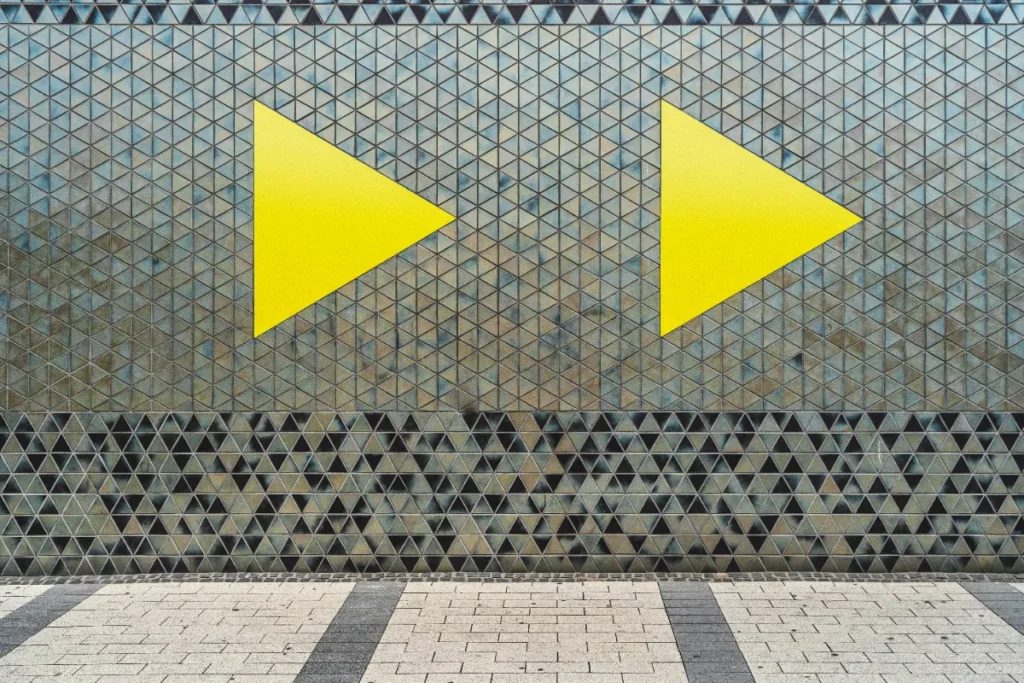
Mood Media is experimenting with inaudible ‘digital tags’ embedded in in-store soundtracks, which activates an app on shopper’s phones with discounts and information on targeted products.
In an experiment heralded by Shopify, wine stores were able to influence the choice of purchase through the music they played. They found that on days the researchers played stereotypically French music, sales of French wines far outsold German wines and days they played German music, the sales of German wine far surpassed the French wine. The same applies at Christmas – playing festive music is proven to increase purchases of Christmas-related products and playing country music tends to make shoppers buy more utilitarian products.
We all have a lifetime’s baggage when it comes to our music and sound associations. Audio branding can harness those associations positively to prime specific behaviours
Outside of retail environments, these insights can be applied to all sorts of customer touchpoints – from increasing dwell and linger times in app, to shaping purchase habits made from IoT tech or on smart speakers, using AI integration.
6. ATTRACT A YOUNGER AUDIENCE
90% of TikToks and 80% of Instagram Reels are now watched with sound on. With 50% users finding new brands through Reels, those Reels that featured audio brand cues showed a statistically significant higher average positive response than ads without audio brand cues. In fact 74% of young adults believe that they develop a better understanding of a company’s personality through their music (PHMG, 2019).

Shareable brand activations using music and sound are a guaranteed way a brand can engage with younger audiences
Spotify’s annual Culture Next Report showed that 63% of millennials feel that audio is the most immersive form of media and that 65% of Gen Z state that audio helps them experience a situation more deeply.
Music is the most talked-about subject on social media
One reason for this is Gen Z’s native currency is ‘moments’ – events (small or big) they can share that have social credence. The more exclusive – the higher the perceived value. And nothing creates a moment better than music; the swathe of Spotify playlists to soundtrack every possible scenario is proof of this.
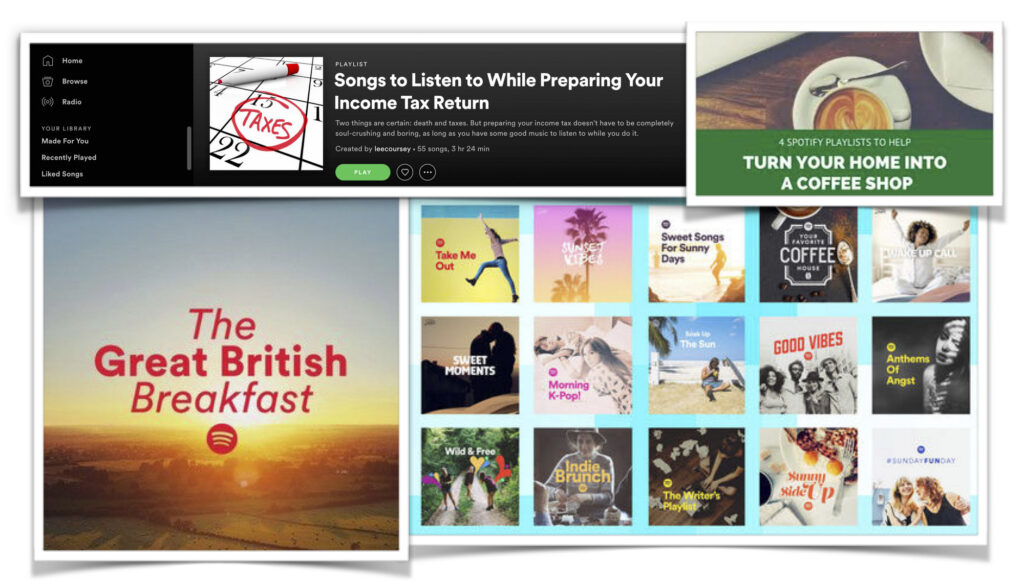
Similarly, 28% of Gen Z social media users consider themselves content creators – a market of some 200 million people, according to Foresight Factory. Meaning if you’re targeting a youth market, you could arm over a ¼ of your demographic to spread your message for you, if you just provide them with curated creative tools to engage and express themselves with. Music is better than anything else for this. And…it’s more effective – 86% of Americans are more likely to trust a brand that publishes user generated content (whilst only 12% feel inclined to buy influencer promoted products).
An audio strategy that creates authentic new experiences or focuses on the cross-pollination of music and tech is a proven way to resonate with youth markets.
BUT, simply inserting your brand into these conversations without genuine purpose or a clear long term plan is a surefire way to lose not garner this demographic.
“Gen Z audiences don’t want to see ad-hoc campaigns, they want to see consistency. Where are you actually going with this?” (Maatin Adewunmi, Loud Parade).
Put simply, be authentic to your brand – and be consistent.
7. NO STRATEGY = NO IDENTITY
35% of all sensory information we take in is via what we hear.
Any audio your customers encounter when engaging with your brand – from the music used in your advertising, what they hear in-store to what you use on socials, through to the sounds your product and even packaging emit – all these moments define and shape how your consumers perceive you.
Without a joined up strategic approach to what your brand’s audio is saying about you, you run the risk of what Colleen Fahey describes as “multiple brand personality disorder” — a confusing, mish-mash of music and sound with no recognisable identity. This disparate use of audio leaves the customer confused about the brand’s DNA and undermines all the efforts placed into other forms of congruent brand positioning – such as graphical iconography, written tone of voice and colour.

When consumers make no connection between the audio and the brand, there was a 7.7% reduction in the brand’s perceived value
In fact Ipsos demonstrated that the audio used by marketing teams and agencies was 3.44 times more likely NOT to be a consistent brand asset than visuals. Meaning, brands are happy to gamble with their audio in an inconsistent, undirectional fashion – but not when it comes to what customers see.
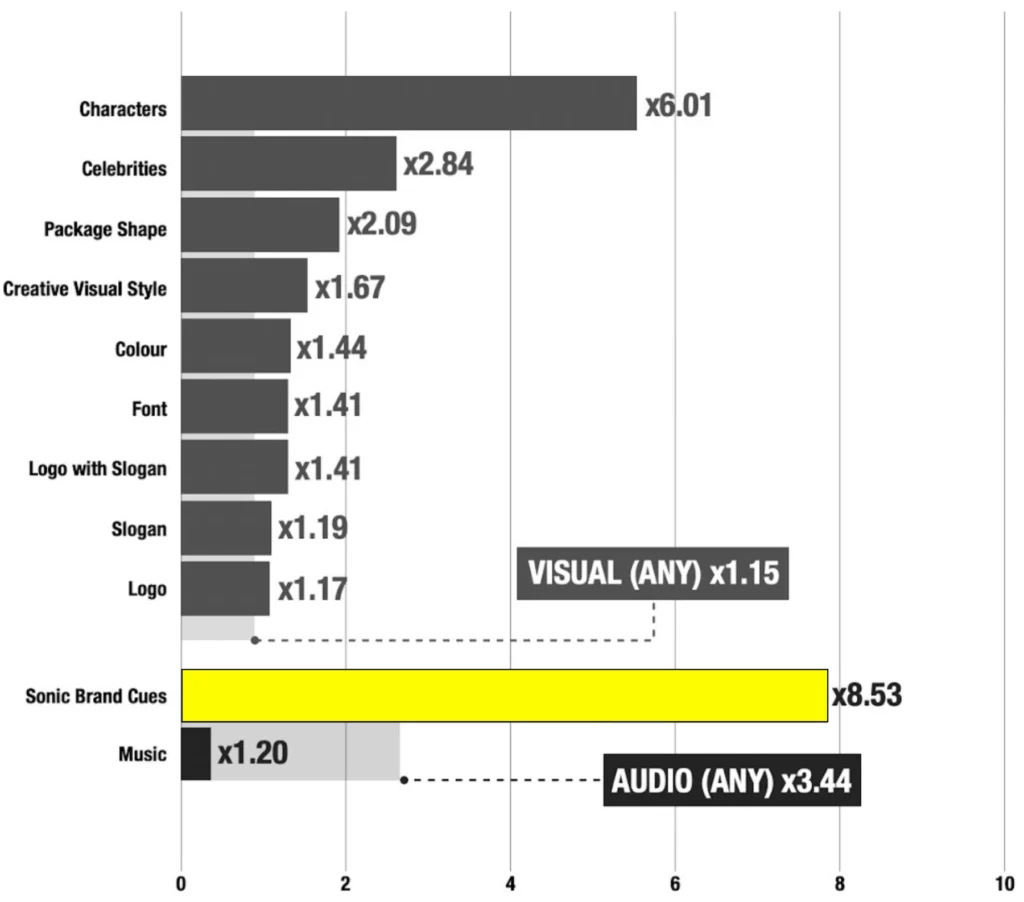
You wouldn’t change your logo for each campaign or switch out your brand colours every quarter. Yet this is the approach most brand’s take to sound and music
Whether you realise it or not, your brand has an audio footprint. What you might not have is an audio identity.
Extensive research from Strike A Chord proved that the strategic use of music increased a brand’s like-ability and familiarity. This increase was most profound when the music was perceived to align ‘fit’ the brand, as opposed to simply being superimposed on top of other branded elements.
Consistent, cohesive audio delivers genuine brand experiences that consumers understand. And it’s this authenticity that builds trust. Trust creates confidence. And confidence leads to sales.
Your Brand. Your Voice. Your Sound
No clichés. Just original, ownable audio that delivers results.
8. USE SOUND TO INCREASE FOCUS AND PRODUCTIVITY
Sound and music can have an incredible effect on productivity.
It’s been proven that well-designed sound environments can increase focus and act effectively as a means of distraction suppression. Research shows that improving people’s auditory environment in the workplace alone can raise their productivity by up to 200%.
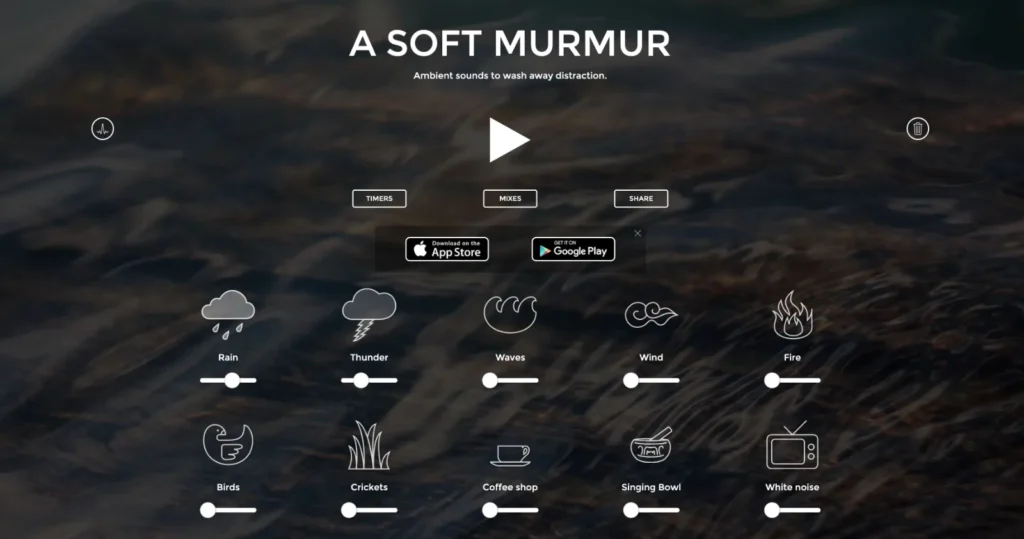
Apps like Freedom, A Soft Murmur and Coffitivity improve productivity by using psycho-acoustic masking – the process of adding low-level, background sounds (such as waves at the beach or a soft coffee shop ambience) designed to subtly cover all manner of distracting noises. This helps us remain in a Deep Work state where creativity and problem solving thrive.
In the same way, sound can be used to effectively ‘focus’ the brain to a particular task and draw a user into the interaction with your brand, product or experience. Sound directs our attention to where it should go – the more meaningful the sound is to the consumer, the more they are able to reject unwanted noise and focus in on your brand.
This can be demonstrated when someone says your name in a noisy crowded room. The sound of your name is meaningful to you, and it’s this resonance that allows you to pick it out of a melee of all other sounds (what is known as The Cocktail Party effect). This same effect can be harnessed through well-tailored brand sound to concentrate attention to your message.
9. IMPROVE USER EXPERIENCE (UX)
Sound creates atmosphere.
Listen to the lack of atmosphere at a sporting event during the pandemic: the Tokyo Olympics or Premier League football played behind closed doors. It was intensely…underwhelming.
The lack of sound devalued the experience.
Because we don’t just experience the world through what we see alone.
Yet this is the default position for a lot of brands. And they’re missing out on a treasure trove of added value for their customers.
Why is this? It’s well accepted that the design and branding industries have always focused primarily on the visual experience – with a tendency to forget that the auditory experience is just as important to the user experience.
Sound can create brand consistency, authenticity and convey your unique personality to the user as well as being ‘functional’.
The best brands understand this.
Porsche’s Sound Symposer, BMW’s Active Sound Design and VW/Audi’s Soundaktor all employ creative technologies to introduce adaptive recordings of throttle sound into the cabin via the car’s speakers system, to improve the driving UX whilst balancing trends towards greener, eco manufacturing.

Products are no longer solely judged on their functionality; these days this is taken for granted. Today’s products distinguish themselves by the user experiences they elicit; and sound plays an essential role in this.
10. BE HEARD WHEN YOU CAN’T BE SEEN
At The Futz Butler we’re committed proponents of an ‘Eyes Up, Ears Open’ approach.
We’re passionate about how sound can help people be more consciously connected with their lives and their environments. Gone are the days where the only role of our ears was to tell us where to direct our eyes.
Hearing signposts a host of functional and emotional cues that our other senses – most notably sight – simply can’t deliver.
- the fizz of a drink for freshness
- thunder signalling how far away the storm is
- the overworked fan on a laptop signalling a fault
In each of the above examples, the experience in terms of what we see is the same – it’s only when we hear the sound that we get the full picture. This is what good Audio Branding does, and another reason why you need an audio brand.
Audio not only delivers the message, it informs how the listener should receive that message too, by way of signposting and emotional context

We can drastically alter how information is perceived simply through a small adjustment in the preceding sound.
Listen to the way the flight announcement feels very different in these two examples, simply by altering the short sound that plays before the message.
this is psycho-acoustics – how meaning and emotion is derived from what we hear
As such there are numerous scenarios whereby sound can deliver key information in a far more elegant and tailored way, than resorting to visual feedback as the default:
- A single message for a large audience
- When there is no GUI or visual feedback mechanism (e.g LED screen):
- Product uses virtual or non-physical technology (AI, VR, RFID, Wireless, SoftKinetic, Gesture Recognition, NFC, Bluetooth etc)
- When a product itself is inaccessible. e.g. built into walls, underground
- Where it is difficult to see clearly the product (it is out of eyeline, too far away or when it’s used in the dark)
- When the user uses it remotely e.g remote robotic surgery, virtual experiential
- When it’s more cost effective to implement a small speaker than a screen or LED display
- Where a physical change in visual appearance (or adding a GUI) could be to the detriment of the product’s aesthetic integrity e.g Smart fashion / wearables; adding a screen to a car dashboard
- When it is desirable to decrease the size of a device and a screen becomes prohibitive
- Using sound as an input mechanism e.g voice recognition
- When the user needs not, or it is unsuitable to pay constant ongoing attention e.g smart fridge, carbon monoxide alarm, battery alert, car dash settings
- Where it may be dangerous for the user to have to look at the product or interface e.g when undertaking another task simultaneously eg. driving a car
- Accessibility e.g. a product designed for the visually impaired or those with dementia
- Using watermarked sound (similar to how Shazam works – audio QR codes) to trigger apps, device instructions etc
- When the need to present certain information in a way that is less dry or more fun e.g Hatnote.com – listen to Wikipedia updates in the form of musical phrases
11. CHANGE PERCEPTIONS AND REFRAME BAD NEWS
As sound designers, understanding and harnessing the way sound can alter reactions is absolutely pivotal as it enables us to re-program – even condition, the way consumers respond and think.
A study showed that people playing Vegas slot machines accompanied by sound effects more typically associated with winning, over-estimated their win rate by almost 24%. They also anecdotally relayed their experience was far more enjoyable than when silent – despite them in fact losing more heavily!
Similarly, the Apple Mac startup chord – heard mostly by users on restart after a crash – is a proven example of a ‘sonic palette cleanser’ – an audio device intended to calm a user’s frustrations and maintain a positive experience in the face of ‘bad news’. And by the way, it’s been an integral brand asset for Apple ever since.
From battery low notifications, car dashboard lights to on hold music and the relaying of terms and conditions – using sound to reframe the overall user experience in a more positive light is an easy win for brands – proven to increase loyalty.
12. SOUND CAN ALTER THE WAY THINGS TASTE
Oxford University research showed playing different sounds in accompaniment to the same meal or beverage was shown to directly alter the way it tasted – what is known as modulating taste – with lower frequencies highlighting the bitter elements, and high frequencies bringing out the sweetness.
Pioneers such as Heston Blumethal have long advocated this influence of one sense on another, but brands are catching on too.
When German brand Beck’s failed to get consumers in Brazil to embrace their beer (which was more bitter than local tastes were accustomed to) they turned to sound to solve their sales problems. In a filmed social experiment, Beck’s played sound waves as people drank the usual beers they had in their fridges. Low frequencies altered the perception of bitter flavours and changed consumers’ perceptions of what they liked in the process. Beck’s sales in South America rocketed (the brand even rolled out a microsite audiences at home could try it themselves).
13. AUDIO FOR WELLBEING AND HEALTH BENEFITS
Sound has long been known to have therapeutic and well-being qualities. It can be used to calm during childbirth, treat anxiety, bring dementia sufferers back from the brink and successfully treat psychotic disorders.
The passenger tunnel at O’Hare airport in Chicago is a fantastic example where audio has been employed to make the journey not only more pleasant but has been shown to calm fearful flyers.
Conversely, infrasound (very low bass frequencies that are below the range of human hearing) has precisely the opposite effect. It can cause people to hallucinate, with subjects consistently reporting a sense of dread or fear when exposed to them. The use of weaponised sound as a mode of social, physical and psychological control for decades is well documented. The deployment of LRAD (Long Range Acoustic Device) deterrent tones as a crowd control system, or playing death metal at Guantanamo Bay during interrogations highlights audio is just as powerful when misused as it is when used positively.
Brands that harness sound in an empathetic way for their consumers’ well-being stand to make huge gains from increased loyalty and the share of wallet that goes with creating happier customers
14. ACCESSIBILITY & INCLUSIVITY
From audio described e-commerce to the new betas of AI-enabled guide dogs, sound is critical for those with visual impairments or with additional accessibility needs. This is when designing with audio becomes a necessity, not just an afterthought.
Silicon Valley is embracing sound, often in conjunction with AI as the new cornerstone of an accessible design approach. Startup Glidance unveiled an autonomous mobility aid, Glide, in late 2023 that uses sensors and auditory feedback to help vision-impaired people steer around obstacles and navigate in public spaces.
15. PERSONALISATION
Modern consumers don’t want to feel like a statistic and brands that treat their customer base like this suffer heavily, particularly with younger demographic markets who demand to be seen individually.
Customers are not only looking to have a great experience when they interact with your brand – they are increasingly looking for it to be personalised too.
And there’s no better way to personalise than with music.
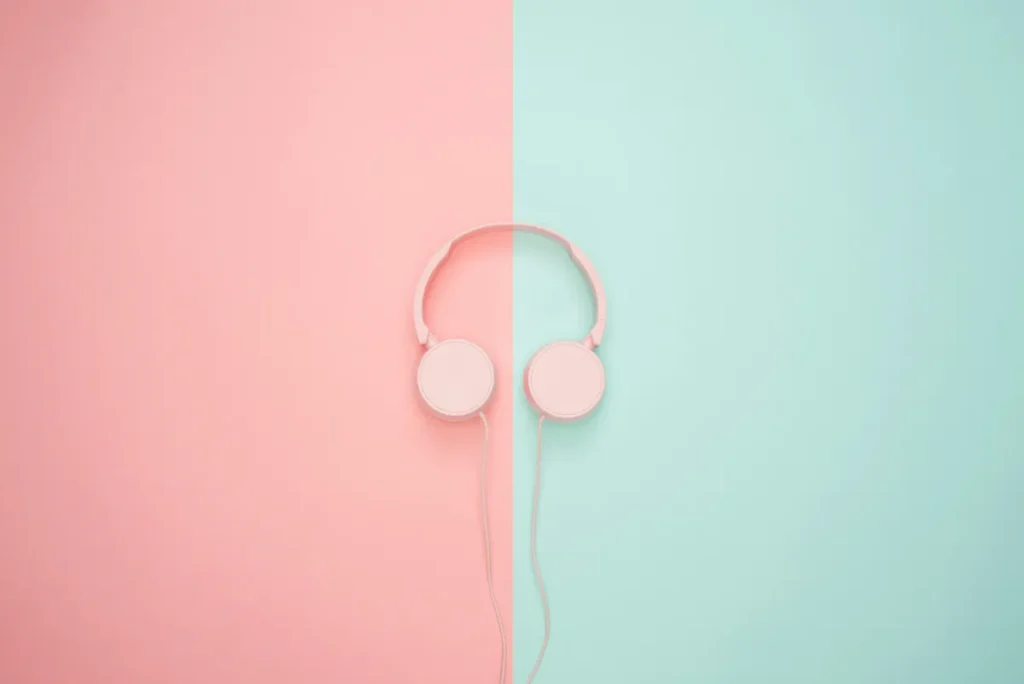
87% of people in the US use headphones for listening to music – an inherently solitary and exclusive medium.
Audio Branding can harness the power of neural networks and metadata to create unique generative compositions and brand sound based on a user’s age, interests or location for example; meaning each time they hear an audio brand asset it could be re-interpreted in a way that is uniquely tailored to them.
Not only would this likely drive increased engagement, it would have the added benefit of having strong talkability between users – particularly on social, with subscribers keen to hear each other’s sonic avatars.
16. REDUCE CRIME
There are countless examples of how sound has effectively reduced crime. Here are some of our favourites.
- In 2003, the use of classical music played outside London Tube stations reduced robberies by 33%, assaults on staff by 25% and vandalism by 37% – all within 18 months.
- By cutting different width grooves into the road surface itself, certain pitches can be created as the car’s tyres cross over them – but only if they drive within the allotted speed limit. Asphaltaphones – or ‘singing roads’ as they are known, are a powerful way in which sound is ‘creatively’ delivering something that more traditional visual deterrants (road signs and cameras) were unable to enforce. Singing roads have been deployed as far and wide as Japan, USA and Denmark.
- In Brazil, DM9DDB São Paulo used long road tunnels to highlight the 60% of human rights violations that go unreported to the authorities in Brazil each year. Radio signals are usually lost inside tunnels like this, so the agency installed FM transmitters and in collaboration with Brazil’s biggest radio stations, ran tailored radio spots encouraging people to report cases of mistreatment to Amnesty International.
17. SOUND IS MORE ADAPTABLE
Reworking or evolving a visual identity can be a lengthy process. Unlike visual elements, audio assets can be reworked indefinitely with ease.
The McDonald’s I’m Lovin’ It audio logo is a great example of this. It’s what we call a Modular concept – a branded audio asset that centres around a core idea (in this case a melody), but not a fixed interpretation of that idea. The core idea can be re-worked to the needs of the specific touchpoint or campaign, whilst preserving recognisability.
Audio assets can be emotionally tilted to accompany a message: in much the same way a film’s main theme can be reshaped to fit the mood of a particular scene
An almost infinite array of assets can be developed. Intel has reworked their famous logo at least six times since its conception and brands as diverse as Coca-Cola, UKTV Channel U&Dave and We Buy Any Car have successfully maintained strong performance by evolving their audio branding.
Seasonal or specific experiential reworkings of audio distinct brand assets (DBAs) have been proven to retain more attribution to the parent brand than similar graphical adaptations.
_Ready to hear your brand brought to life?
FAQs
Why do I need an audio brand?
Like the need for a strong visual identity or brand tone of voice, a joined-up audio brand strategy is essential to communicate who you are, what you stand for and why consumers should engage with or buy from your brand. After all, we don’t just experience the world through what we see alone!
Whilst most brands wouldn’t dream of leaving their visual identity to chance, this is too regularly what happens when it comes to what consumers hear. Without a consistent experience it has been proven consumers lose trust, view the brand as inauthentic and seek out competitors.
Is audio branding really important?
Yes, audio branding is increasingly important in today’s consumer landscape with more touchpoints now natively sound-on. As we move away from text input and screens to engaging with technology in a more natural, human way (think voice-prompting AI or smart speakers for example), brands will need to adapt to harness the power of sound as a more central strand of how they interface with their customers.
Well curated, on-brand audio helps capture attention, drives engagement, and reinforces brand recall, contributing to a cohesive brand experience that consumers not only recognise but strongly identify with.
What are the benefits of audio branding?
The benefits of audio branding include increased sales, enhanced brand awareness and positioning, improved customer loyalty and deeper engagement. Brands that use consistent audio branding create a 46% stronger emotional connection with their audience and 72% of consumers who recognise a brand by its audio logo are more likely to choose that brand over competitors.
Sound and music can humanise a brand in a way no other sense can, evoking emotions and delivering highly personalised experiences consumers demand, especially younger demographics. Sound bypasses the parts of the brain that written copy and visual messages fall short of. Audio gets people ‘feeling’ not actively ‘thinking’.
